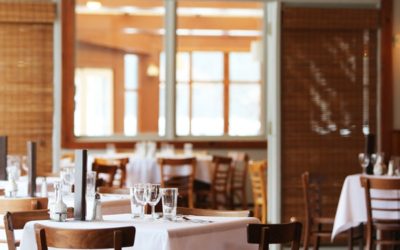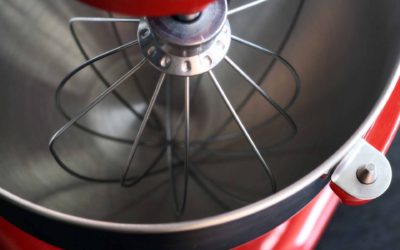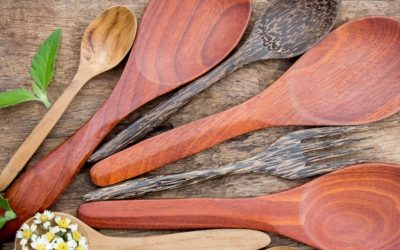The DIY Guide to Your Restaurant’s Own Garden
January 19, 2018Stocking your restaurant supply with your own home-grown herbs and produce can truly bring your dishes to life.
When it comes to food, everyone knows there’s nothing like homemade and home-grown. Having your own culinary garden, however large or small, can help you build a reputation for creativity, fresh food, and environmental consciousness.
Are you curious about making your own garden a source of your restaurant supplies? We’ll tell you how and why.
Why Grow your own Restaurant Supply like Herbs?
- Always stocked – When your restaurant supplies are home-grown, you won’t have to worry about recalls, shipping delays or shortages. If you maintain it well, you can walk into your culinary garden and take what you need any time you want.
- Fresher, richer, bolder tastes – From the time herbs are harvested to the time they end up in your dishes, they lose their flavors. When your restaurant’s supply of herbs is just feet away, your dishes come alive with the strong flavors retained in the fresh herbs.
- Inexpensive ingredients – Along with all the other benefits, growing your own herbs and produce is cheaper, too!
- Better for the environment – When you add homegrown produce to you restaurant supplies, you’re cutting down on the packaging and carbon emissions that would have been created by the transport of produce to your restaurant.
- Beauty and novelty – A culinary garden can double as beautiful landscaping that increases the beauty of your restaurant. Customers will enjoy both the aesthetic appearance and knowing exactly where their food comes from.
Where to Plant Your Garden
If your restaurant has a yard, you can build your new culinary garden right out front to beautify your store entrance. Alternatively, you can plant it behind your kitchen for easy access to those fresh, leafy restaurant supplies. If you don’t have a yard, though, you can still find plenty of space for a small garden. Take advantage of window boxes, planters, and rooftop gardens, for example.
You don’t need to worry about your new source of edible restaurant supplies getting overgrown, either. As long as you’re using them in your cooking (and you certainly should be!), the plants will stay small.
What to Plant in Your Garden
If you’re short on space, you can plant multiple different herbs together in one bed or planter. Make sure to plant herbs that require similar growing conditions together. Herbs like rosemary, lavender and thyme need drier soil and plenty of sun, whereas other plants need plenty of water and more shade. Check the growing information for the herbs you wish to add to your fresh restaurant supplies, and match them up!
Also consider adding fresh fruits and vegetables to the mix. For small gardens, plants like tomatoes, cucumbers and green beans will maximize your space, because they can be trained to grow vertically up trellises. Low-growing fruits, like strawberries, can also make great additions to small gardens. Imagine juicy, fresh fruit being part of your own personal restaurant supplies.
To brighten up your garden or your planters, you can add flowers – but they don’t have to be just any kind of flower. Edible flowers like violets and roses can add color to your surroundings. At the same time, they can act as a beautiful and unique touch as a garnish or ingredient in one of your signature dishes.
Homegrown herbs and produce are truly wonderful and versatile way to stock up on the fresh ingredients on your restaurant supply list. Whether you want to start small or jump right in, we encourage you to try this little touch that will make your restaurant even more special.
5 Keys to Creating the Perfect Restaurant Seating Areas
Restaurants are about so much more than just food. From the setting and layout of your restaurant to your choice of colors, it takes a lot more than an appealing menu to keep diners coming back for more. When setting up your restaurant, booths and chairs are important...
5 Essential Buying Tips for Your Next Food Prep Work Table
The right foodservice equipment is pivotal to the efficiency of your kitchen. One of the most important types of foodservice equipment for any kitchen is the work table. With limited room on countertops available for your food prep needs, the cooking process can drag...
Tips for Keeping Your Commercial Sink Sparkling Clean
Your commercial kitchen, just like your personal kitchen, must be kept clean at all times. With all of the cooking and food processing you do, it is inevitable that your sink gets messy. Cleaning up your commercial kitchen is incomplete without proper cleaning of your...
Food-Cutting Secrets to Beautiful Dishes
In the restaurant industry, presentation is often said to be just as important as the food itself. Using the right knowledge, skills and restaurant supplies, you can incorporate creativity into your presentation, making guests feel that they are getting something...
Top Space-Saving Tips for Commercial Kitchens
Top Space-Saving Tips for Commercial Kitchens Space is always an important consideration when setting up a kitchen, and this is even truer for commercial kitchens. With a strong focus on functionality and the kitchen supplies that meet the needs of your commercial...
5 Ways to Get the Most Out of Your Mixer
No one wants to eat off of dirty or tarnished silverware. A stand mixer is a highly useful piece of kitchen equipment to invest in. Although this type of kitchen equipment does not usually come cheap, it can last a lifetime when properly cared for. Despite all your...
Restaurant Prep Tool Selection Simplified
What’s a restaurant kitchen without high-quality prep tools that can withstand the pressure of frequent use? Whether you already have a restaurant you’re running, or you’re just planning to launch one, one vital factor that could make or mar your business is how you...
Beginner’s Guide to Choosing a Commercial Ice Cream Freezer
Ice cream is a delicious and appealing desert treat for everyone, young or old. Having made the decision to sell ice cream to your customers, whether you have a restaurant, convenience store, or specialty ice cream parlor, it is time to begin stocking up on the right...
How to Choose the Right Kitchen Scales for Your Restaurant
A food scale is an essential item in every restaurant’s store of kitchen supplies. Designed to take the guesswork out of food measurement and maintain consistent food serving sizes, food scales are indispensable kitchen supplies in the commercial kitchen. With such a...
Beer Chilling Systems: Which Type Is Right for My Restaurant?
A refrigeration unit is integral to the functioning of any restaurant. Beers are best served cold - there’s no questioning that! But which beer chilling system is the best? From reach-in coolers to glycol chillers, a beer chilling system is an important piece of...
What Equipment Will I Need to run a Food Truck?
There’s a lot of planning that goes into starting your own food truck business. Before you hit the road with your delicious food offerings, you’ll need to fill up your truck with all the right foodservice equipment. Considering the lengthy list of possible items to be...
8 Types of Food Thermometers: What You Need To Know
Food thermometers are essential restaurant supplies for your commercial kitchen. They ensure that foods prepared in your commercial kitchen are cooked to the right temperature and held at that temperature for as long as necessary to kill any harmful bacteria. This...
How to Identify the Best Food Processor for Your Needs
Highly versatile and extremely efficient, food processors are designed to take away the hard work from repetitive kitchen activities. This type of cooking equipment can quickly become an invaluable tool in your kitchen. From chopping, to shredding, grinding, mincing,...
6 Keys to Choosing the Best Chafing Dishes for Your Restaurant
The chafing dish, also known as the chafer, is an essential piece of restaurant equipment for any establishment that wants to keep food hot. This type of restaurant equipment gets its name from the French word, chauffer, which means to heat, and it’s easy to see why....
Turning up the Dial on Commercial Fryers: How to Choose One for Your Restaurant
Fried food is a well-loved favorite. This is a fact. It also makes a fryer an important piece of equipment to have in your commercial kitchen. Just consider how many appetizers and sides require frying: onion rings, French fries, and fried green tomatoes are just a...















